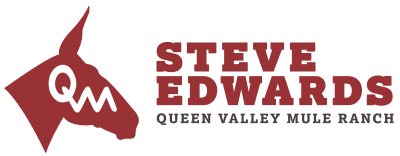And So It Begins…. Training Mules in Israel
Last month, I shared some photos of my trip to Israel. I surely feel blessed to have the opportunity to see new places and to travel. Once I had a bit of time to be a tourist, it was time to get down to business and start helping the people there with their mules. Now I do a pretty fair job of speaking Spanish and I regularly speak in English, but I don’t speak Hebrew. So when I met the mules I would be working with and learned that they were born in Israel, I also learned that their owners spoke Hebrew to them. This would be interesting!
In a nutshell, we now have an American mule man speaking English to some Israelis who do not speak very good English. But we did have interpreters there to help. So we moved onward. I listened to the folks tell me what they had done with their mules. They told me that they had seen me on YouTube and I was fascinated with their interest and willingness to learn.
Addressing the Mule Myths
One of their biggest concerns raised early on in our session was that they had heard that mules will “get even with you” when you least expect it. Now this is a common myth and I told them so. But I stressed that mules are very intelligent and they don’t appreciate a fool. But they are also forgiving and tolerant. I pretty much chalk up the “get even” story as an old wives tale but I did say that if the mule is consistently abused or treated badly, one might expect some bad behavior. I also spent a lot of time talking about how to move around a mule’s back feet as well as how to handle them.
Another concern was that the mules were so strong that they might “drag them around”. I assured all of my new friends that we would be spending some time on leading manners. They sighed with relief.
They also had questions about feeding, general care, bitting, equipment, and more. These were all questions that I usually hear at any presentation or clinic that I do. So it became clear to me that the Israeli mule owners had the same questions and concerns as folks I have worked with in the smallest of US farm towns or the biggest of Brazilian cities. Mule owners all have the same questions and concerns. So I brushed off my “ask, tell, demand” speech and my talk on comfortable vs. uncomfortable as a general motivation.
Communicating With Your Mule
I spent time explaining that the first thing I want to teach my mule is respect for the halter. I showed them the come along hitch and explained how it can communicate with the nose and the pole – but most importantly, the soft part of the nose. After all, a mule cares more about his nose than his mouth. So those horse trainers don’t have a lot of success training a mule with the pressure and release mouth work. While stressing this, I incorporated ask (small amount of pressure), tell (more pressure on the nose) and demand (a good tug on the nose with that rope) and reinforced the idea of a comfortable nose vs. an uncomfortable nose. It is always fun to do the demonstration of the come along because the results are dramatic.
Now the come along also involves the lower part of the jaw and the pole making it a perfect tool to ready the mule for working with the headstall and bit. But most importantly, the come along teaches the mule to respect the halter. So once he sees he is most comfortable standing still and not pulling on the rope, he will stand still no matter what is going on around him. I can yell, wave a tarp, make noises and more. Make no mistake here – I am not desensitizing my mule – I am training him to respect and honor the halter. There is a difference. And I can teach him this in just about 15 to 20 minutes. He will not drag me around any more – that is for certain.
I stressed the importance for consistency and practice. There was surely a lot of interest in the come along because of the fast results. It was fun to see the mules that dragged their owners into the arena all standing nicely in such a short time! So we moved quickly onto graduating into a well adjusted rope halter as the next step. I explained that many horse trainers use the rope halters incorrectly. The knots are often in the wrong place and the halter loose where it should not be.
I explained to the Israelis that in America, many of my students are mature women. In such cases, I like to use the rope halter and the come along in combination at times – until the mule is minding well. I also stressed that the rope halter must be properly applied and fitted. We did a lot of work on that topic.
I explained that as the mule progresses and wants to stand still consistently, it is time to teach Mr. Mule to pick his feet up. I have done lots of articles and DVDs on this training process. Basically, I teach the mule to stand still and quiet on 3 legs using the button on the scapula and the button on the hip to cue him to pick up the foot, Notice I use the word “cue”. Remember, mules know how to pick their up their feet. They just need to know when to do it and do it quietly when I ask them to do so (i.e. touching the button on the scapula). I have included pictures of a 72 year old Israeli cowboy. This was his first experience with a mule. He borrowed it from a guy who said stay away from the back feet! He said, “ don’t get behind him or he’ll kick you”. As you can see, the mule’s leg is laying across the thigh of Uri (the man) and his hands are out in the air. He was quite a showman. But this is what I believe we should be doing in training. It’s not as important to get in the saddle as it is to get the groundwork squared away. What happens if you should happen to fall off or something goes wrong and you have to be down around the feet? We do not need to hurry to get into the saddle.
I recalled for them that when I was a young boy, we would throw the mule on the ground get them to submit and then climb on or we would strap them to a snubbing post, blindfold him and then get on. That was great when I was 20 years old but now I’m 67 and I want to be smarter! Again it’s not important to climb in the saddle quickly – why not build a good foundation on the ground? Pick up the feet, turn on the fore hand, turn on the hind quarters, pick up the feet and teach your mule about comfort.
3 Days of Training
We had a total of 3 days to train 12 mules and 12 inexperienced equine enthusiasts. These guys ranged in age from 35 years old to 85! I explained to them that while I can climb on a mule and ride it with just a couple hours of work, I will have pushed and rushed only to show the steps of how fast it can be done. It will make me look skilled but the mule doesn’t know what the heck happened. So during our training sessions, we worked with the mule for a bit – until we were sure that both mule and handler had a good grasp on the lesson. Then we would let the mule be and go sit under the Olive Tree for a while and visit. Then we would work a little more.
The training Clinic was done at a kibbutz. This is a community of people working together. Our host was an Israeli named Yuri who loves working around livestock. He has some horses and did some training of other folks horses in the area. Yuri was in his mid-forties and was a pretty good hand. He and his friends sure wanted to learn how to train mules. He had raised three very good mules from his good mares and David’s Mammoth .
I took great care to explain the idea of a mule “clinic” – what they saw happening in just a few hours or days generally takes 6-12 months to teach the mule well. In order to give your mule a foundation and help him enjoy a lifetime of good skills, it takes more than a two or three day clinic. It takes consistent practice over weeks and months. Fair, consistent, honest work is needed. There is clinic time devoted to helping you plan to do just that. Problems may take even longer. I have produced several DVDs to reinforce foundation training and basic lessons and I do clinics all over the United States and the world. It is an incredible privilege for me and I want to help any mule owner who wants to learn.
So if you would like to host a clinic or know of someone who would, please have them give me a Holler. I’ll go anywhere to help folks better understand and communicate with her mules and donkeys.
- Posted in: Articles, Everything
- Tagged: Articles, Everything


